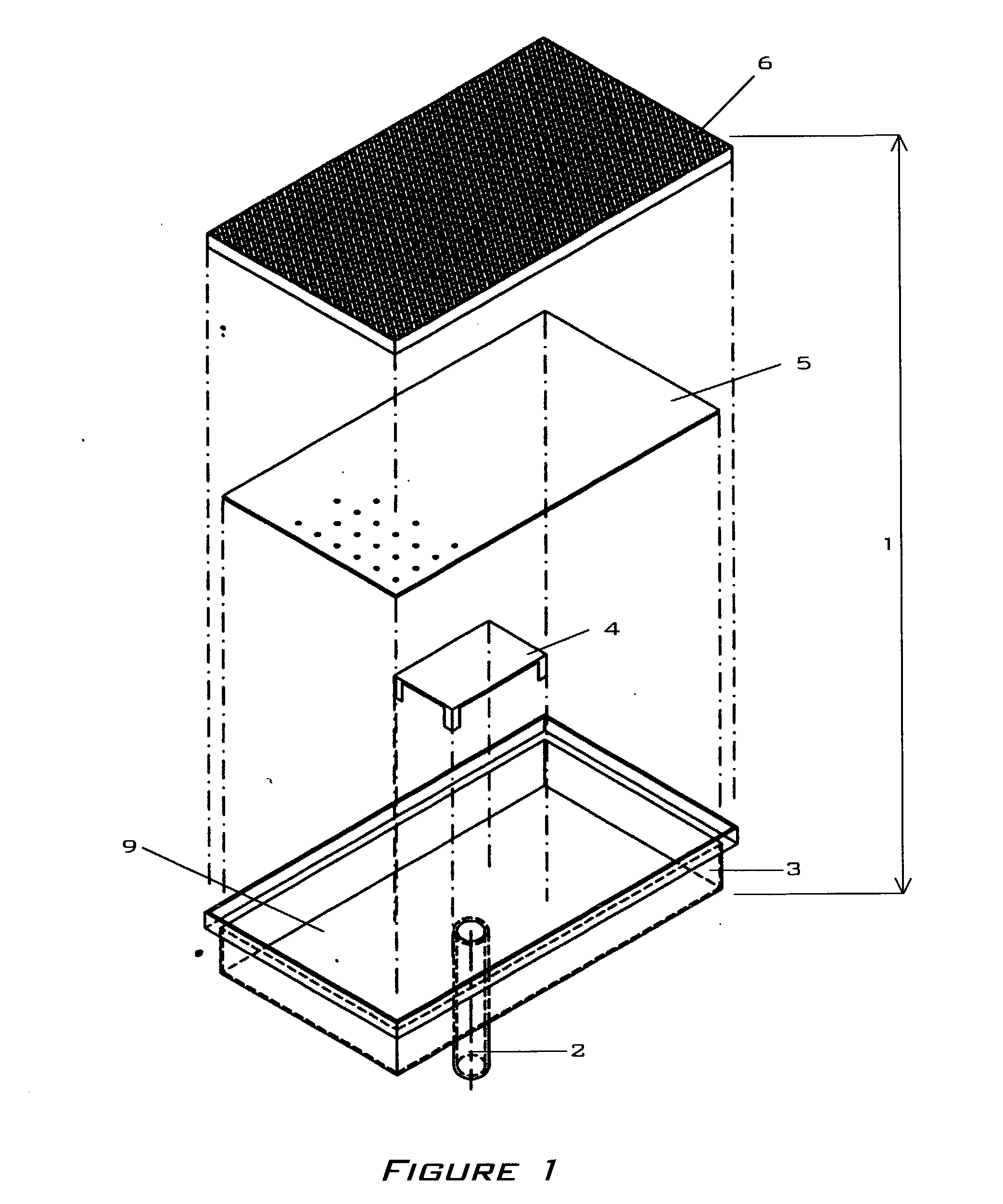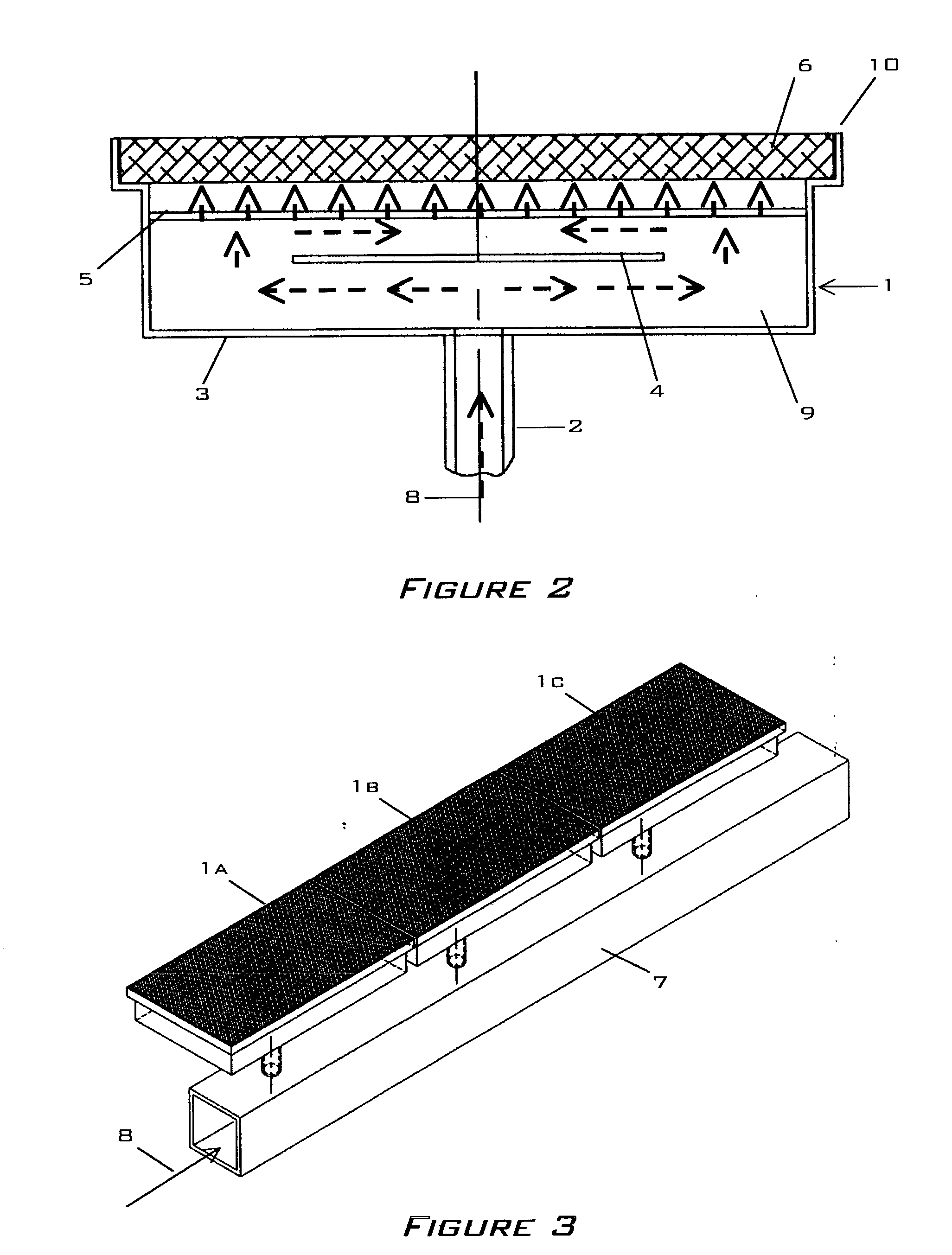Radiator element
a radiation element and radiator technology, applied in the direction of burners, combustion types, burner material specifications, etc., can solve the problems of brittle ceramic radiators, easy damage, weak structural structure, etc., to improve radiation efficiency, improve heat dissipation efficiency, and improve the effect of mechanical damage resistan
- Summary
- Abstract
- Description
- Claims
- Application Information
AI Technical Summary
Benefits of technology
Problems solved by technology
Method used
Image
Examples
Embodiment Construction
[0033] FIGS. 1, 2, and 3 describe the application of the present invention to a radiant burner 1. While planar applications are shown and described other shapes including but not limited to cylinders and tubes are also possible. FIG. 4 shows an exemplary metal foam embodiment of the present invention.
[0034] FIGS. 1 and 2 show a typical burner 1 comprised of an inlet 2, a plenum 3, a baffle element 4, a diffuser element 5, and a radiator element 6. FIG. 3 shows the arrangement of several burners 1a, 1b, 1c along a single manifold 7 in an arrangement typically found in a textile dryer. An igniter device as understood in the art is mounted adjacent to the radiator element 6 as so to initiate combustion of a fuel-oxidant mixture 8.
[0035] The plenum 3 is comprised of a five-sided structure having an open front 10 over which a radiator element 6 is fixed. A typical plenum 3 is composed of a metal either cast, molded or formed via methods understood in the art. An inlet 2 is attached to on...
PUM
 Login to View More
Login to View More Abstract
Description
Claims
Application Information
 Login to View More
Login to View More - R&D
- Intellectual Property
- Life Sciences
- Materials
- Tech Scout
- Unparalleled Data Quality
- Higher Quality Content
- 60% Fewer Hallucinations
Browse by: Latest US Patents, China's latest patents, Technical Efficacy Thesaurus, Application Domain, Technology Topic, Popular Technical Reports.
© 2025 PatSnap. All rights reserved.Legal|Privacy policy|Modern Slavery Act Transparency Statement|Sitemap|About US| Contact US: help@patsnap.com



